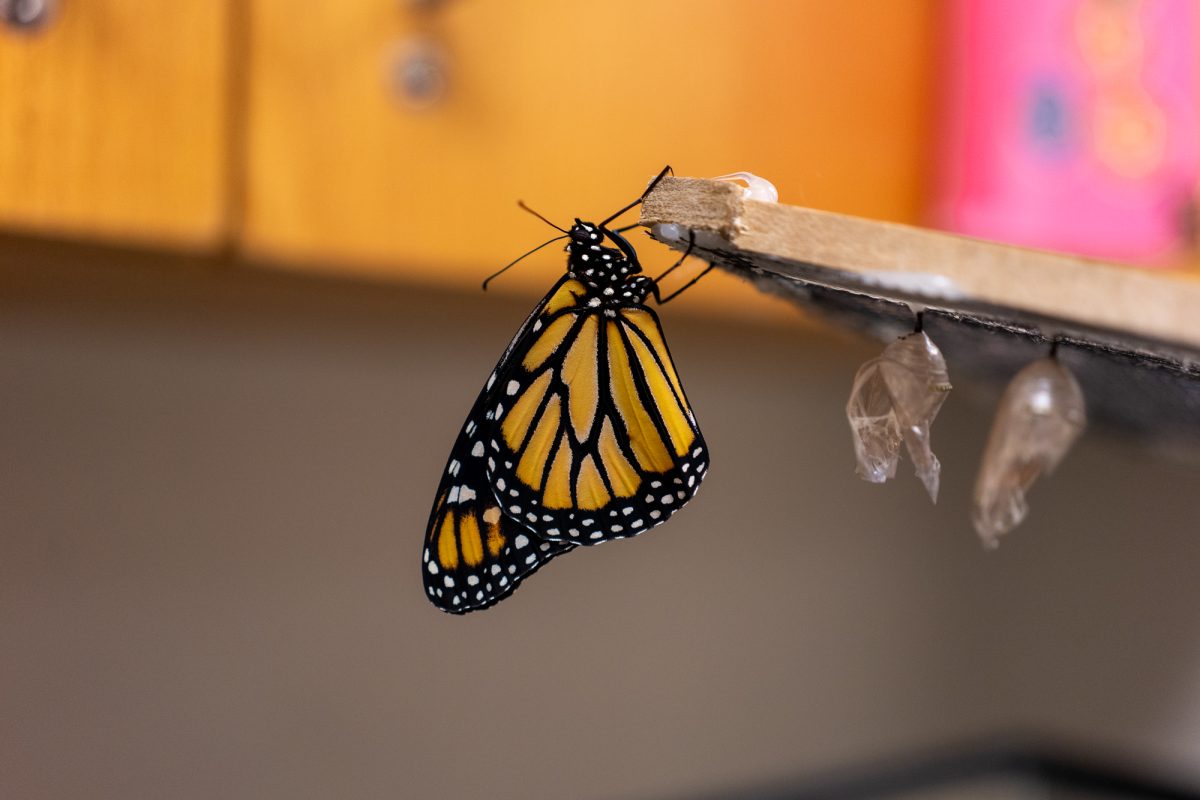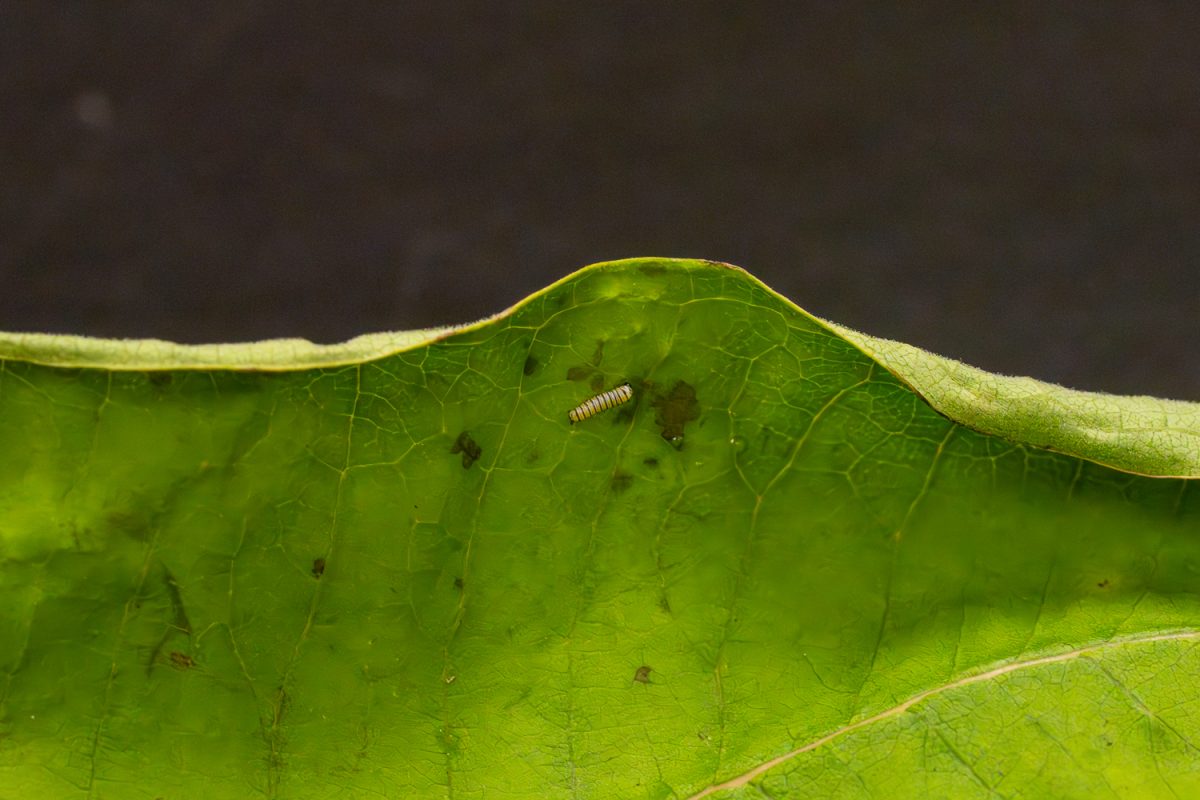The monarch butterfly migration is among the most vibrant, surreal, and awe-inspiring natural phenomena in the world. Millions of glistening butterflies travel thousands of miles each year from all across North America to the forests of southern Mexico. There, the trees are shrouded in an orange blur, with the beating of wings creating a spectacular ambience. The monarchs will remain in these woods for months, traveling north once again in the springtime. Like clockwork, the great butterfly migration remains a staple of cultural and ecological significance, despite its impossibly bizarre wonder.
For the first time, the North Allegheny Senior High School Science Department played a role in this global sensation, raising and releasing two monarch butterfly caterpillars over the past month.
Similar to the monarch’s voyage southwards, raising caterpillars from origin can be a journey itself. Although they spend the majority of their day eating or crawling very slowly along the ground, caterpillars can be a handful to raise. They require constant fresh greens, delicate handling, and meticulously planned surfaces to explore.
NA Science Department Chair Chris Omasits spearheaded the caterpillar project at NASH this fall.
“Mr. Shane at Ingomar Middle School does this [each year],” Omasits said. “Through talking to him, I was reminded how cool it is. Just seeing the life cycle happen that quickly is amazing. I want my students to have a different appreciation for nature, no matter what science class they’re in.”
Although an intriguing and entertaining learning experience, the experiment entailed challenges for Omasits.
“Once they’re in the chrysalis, they are very fragile,” he explained. “We have to be careful that they never fall or else the butterfly will not hatch. It needs to attach tight enough. And our two were next to each other, so whichever one hatched first could have knocked the second chrysalis down.”
In Room 337, where the experiment was conducted, only two of the three caterpillars survived into their final stage of metamorphosis. The unfortunate caterpillar simply didn’t grow fast enough to meet nature’s strict quota. This sad reality is common for many species. Monarch butterflies in particular are an endangered species at huge risk of extinction. Deforestation has limited rest stops and destinations on the butterfly migration, turning an arduous journey into a formidable challenge.
However, monarch butterfly conservation is possible. By planting native milkweed, citizens can create nectar re-fueling stations that the butterflies depend on. Milkweed and monarchs are best suited for sunny environments. The milkweed grows differently depending on soil consistency, but resources to choose the most suitable foliage are easily available.
As for the future of the NASH butterfly project, Omasits is especially optimistic.
“Maybe we can start butterfly gardens around the different schools,” he said. “It would be great to have this experience at many different locations so that all students can appreciate nature a little bit more.”




